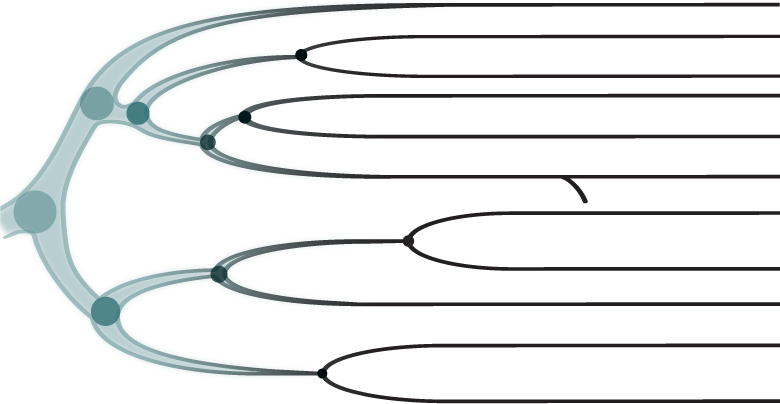BACTERIA
Bacteria are single-cell organisms that, like archaea, lack a nucleus, the compartment within a cell that separates DNA from the rest of the cell. The most abundant and successful organisms on the planet, bacteria are found everywhere—in soil, in water, in the intestines inside your body.
Las bacterias son organismos compuestos por una sola célula que, tal como las archaeas, no tienen núcleo, el compartamiento dentro de la célula que separa el ADN del resto de la célula. Las bacterias son los organismos más abundantes y con más éxito del planeta. Las bacterias se encuentran en todas partes — en el suelo, en el agua, en los intestinos dentro de su cuerpo.
Branch: Actinobacteria
Example: Unknown
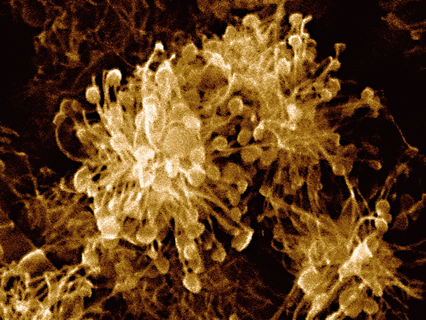
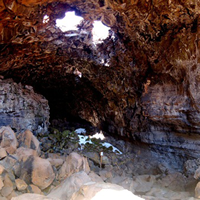
Colorized Scanning Electron Micrograph (SEM) of Actinobacteria from colonies on the walls of Four Windows Lavatube, El Malpais National Monument, Grants, NM. The entrance to this lavatube is also shown.
Here are some fun facts from Penelope Boston about the Actinobacteria Phylum: Actinobacteria are mostly aerobic, although a few can grow anaerobically. They are ubiquitous in soils, on plants, in fresh and saline water, and in many kinds of caves. Their activities give them the distinctive odor of freshly turned or rained on soil. This lovely spring-like smell, known as petrichor, comes from a chemical called geosmin. Some actinobacteria are filamentous and were originally thought to be some sort of fungus. Others are cute and fuzzy. There is a claim that the oldest of all continuously living things on the planet is a Siberian actinobacteria. This could be true because some living organisms including actinobacteria that were trapped for about 50,000 years in crystal fluid inclusions in the extremely hot Naica cave system in Chihuahua, Mexico, appear to have been recovered in the laboratory. Actinobacteria are one of the main groups of organisms that produce antibiotics, and that discovery won a Nobel Prize for Selman Waksman.
Branch: Actinobacteria
Example: Unknown
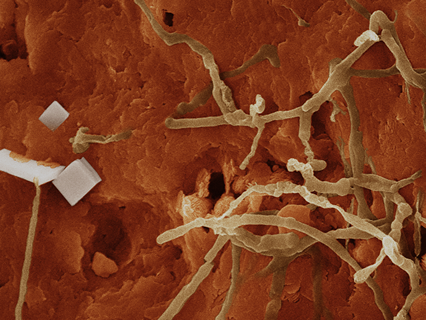
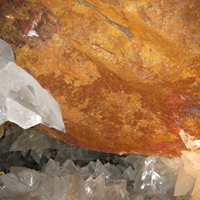
Colorized Scanning Electron Micrograph (SEM) of an Actinobacteria specimen (green) along with a tiny gypsum crystals (white) from Los Cristales Cave, Naica, Chihuahua, Mexico. The context shot shows the red material, which is iron oxide and clay, on the cave walls where this actinobacteria specimen was found, as well as some larger gypsum crystals.
Branch: Actinobacteria
Example: Streptomyces
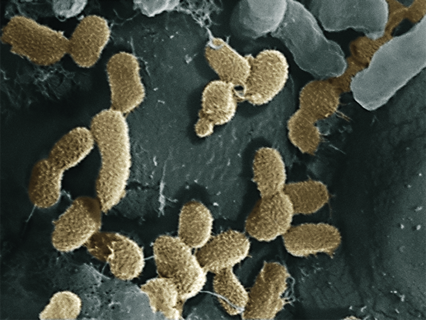
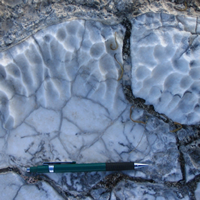
These fuzzy Streptomyces, colored gold in this Scanning Electron Micrograph (SEM) image, live in communities with many other species in a gypsum fracture. The gray lines in the inset images of white gypsum are fracture communities. The community helps to enlarge the fracture, gains protection from the dryness, and can retain moisture longer. It is also partly screened from the full intensity of sunlight including ultraviolet radiation. In exchange, however, the organisms have to be able to function under extreme osmotic stress because the gypsum is so soluble in water that it reaches saturation and dissolves virtually immediately with every rain event.
Branch: Cyanobacteria
Example: Unknown
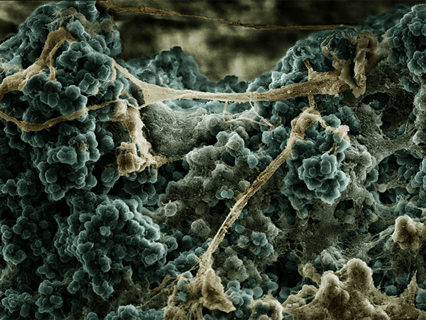
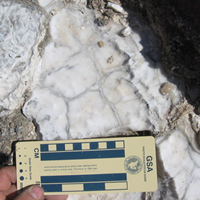
This community of Cyanobacteria, also known as blue-green bacteria (and colored blue-green in this Scanning Electron Micrograph (SEM)), is enmeshed in biofilm. It was found within a gypsum fracture community. These communities are found within the dark cracks in the gypsum shown in the inset image from Chosa Draw, NM.
Branch: Branch Unknown
Example: "Death Stars"
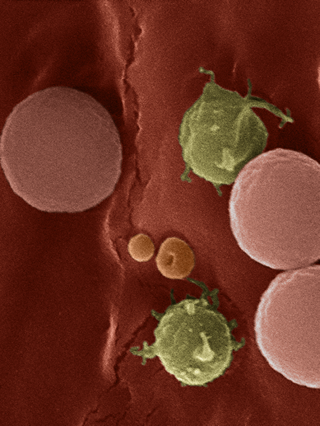
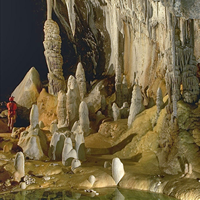
The three microbial morphologies shown in the colorized Scanning Electron Micrograph (SEM) are from iron and manganese rich deposits found in Lechuguilla Cave, New Mexico. The organisms colorized green are nicknamed "death stars". They are very probably bacterial given the setting, geochemistry, and atmospheric chemistry of their environment. Inset is an image of stalagmites, stalactites, and draperies by a pool in Lechuguilla Cave.
Branch: Branch Unknown
Example: “microcholla”
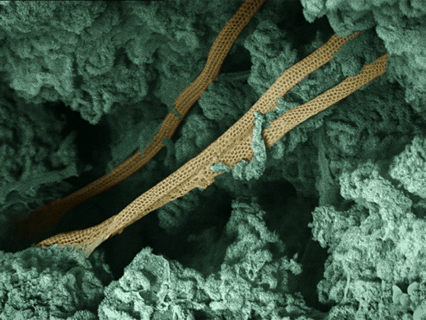
Who are they? Are they Bacterial ancestors? No one knows. In a Scanning Electron Micrograph (SEM) image, these mysterious reticulated filaments look like fishnet stockings. They have been nicknamed “microcholla” because their appearance also recalls the dried remains of dead cholla cactus branches that are found scattered across the landscape of the American Southwest. Fuzzy-looking actinobacteria are in the background. These organisms from Maelstrom Lavatube in Hawaii are found growing in a blue-green copper mineral (hydrated copper silicate) called chrysocolla.










